In Ferlo, Senegal, one of the driest regions of the Sahel, pastoralist communities are leading an innovative experiment. Together with WeForest, monetary backing from Wex, and Deloitte, and technical support from Agronomes et Vétérinaires Sans Frontières, Pôle Pastoralisme Zones Sèches, the Senegalese Institute of Agricultural Research, International Center for Research in Agriculture and Development, and the Association for Integrated and Sustainable Development and the Association for Grassroots Development (EGAB), they’re reviving the ecosystem and strengthening their livelihoods, in the middle of a drought-ridden near desert landscape.
With years of hands-on restoration experience across the Sahel, Omar Sall, agroforester and environmentalist at WeForest, supports restoration efforts in Ferlo. Now three years into the project, and across three pastoral units, progress is tangible, he tells us. Over 267,000 trees have grown, 82,000 seedlings have been planted, and 1,076 hectares have been protected. In this interview, he walks us through the challenges, breakthroughs, and surprising lessons from the frontlines of forest restoration in the desert.

Why is reforesting Ferlo so complex and why is it important to do so despite the challenges?
Ferlo is a pastoral zone in Senegal with a lot of livestock. In both rainy and dry seasons, people struggle to feed their animals and often use trees for animal fodder. There is a lot of drought in the region. All of these factors feed into land degradation. We’re seeing that important tree species are disappearing, like Adansonia digitata, Dalbergia melanoxylon, Pterocarpus erinaceus, and Grewia bicolor, a worrying sign for both biodiversity and the long-term sustainability of local livelihoods. This matters not only locally but globally, because Ferlo is part of the Great Green Wall initiative, an African-led movement launched in 2007 to grow an 8,000-kilometre belt of restored land across the width of the continent.
Our program’s objective is about reversing this degradation, and that’s more than growing trees. It’s about supporting communities, – often blamed for forest deforestation – reconnecting with their environment and restoring the landscape. Many of these communities have never engaged in restoration activities before. They’re growing trees for the first time.
Given that this region gets so little rain, how are trees growing at all?
Our core innovation in the Sahel is the use of half moons. A half moon is a kind of hole dug by a tractor, using what we call a Charrue Delfino (Delfino plough). This technique allows us to catch and hold a large amount of water, which is essential in such a dry area. By using half moons, we ensure that where we plant, there will be enough moisture to help the plants survive. If the half moon is dug deep enough, with the correct dimensions, it can capture around 1,000 liters of water. And that’s important because during the rainy season, it doesn’t rain every day.

In Ferlo, the rainy season starts around mid-July and ends in September. But it’s irregular. There are dry periods even within the rainy season. You might get the first rain in July, then go two weeks without any more. So while the season spans about three months, you might only get one full month of rain in terms of volume and consistency. Additionally, the soil is very sandy, so the water doesn’t last long. Even in the rainy season, water in sandy areas disappears quickly, sometimes in less than an hour. The half moons retain moisture during these dry spells and support the trees’ growth. Even if the water drains, the soil stays humid, which allows the seedlings to survive.
What steps do you take to ensure the half-moon technique is applied correctly?
The first thing to check is the slope, in French, we say la pente. When it rains, water follows the slope, so the half moon has to be placed in the right direction to catch the water flow. This is the most important aspect. If you don’t have a tractor, you can dig manually. But if you do have a tractor and a Delfino plow, that’s better—it’s faster and more consistent. You dig perpendicular to the slope.
Also, you must space them in staggered rows, not just one long trench. You dig one, leave a space, dig another. This allows water to flow from one half moon to another. As for the dimensions. The half moons we construct are about 6 meters in length, 50 centimeters in depth, and then we create half moons 2 meters apart in distance. The 50 cm depth is important because that’s where the better-quality soil is deeper down, it’s less degraded and has more nutrients.

We also use goat and sheep manure, about 800 kilograms per hectare. We place it in the half-moons. The soil retains moisture when it rains, it improves soil fertility, and even introduces seeds that can support plant growth. Then, we plant in the half moons, three holes per half-moon, one at each end and one in the middle.
How do trees survive in the Ferlo region during the dry season, given the extremely limited water availability?
We have experimental plots where we water some of the seedlings to test how important watering is. In the larger community plots—what we call parcelles communautaires—we don’t water at all. We want to see whether the trees can grow naturally without irrigation, because watering is not really feasible in Ferlo.
We’re testing five main tree species this way – the Acacia senegal (Gommier blanc), Balanites aegyptiaca (Soump), Ziziphus mauritiana (Jujubier), Adansonia digitata (Baobab), and Moringa oleifera (Moringa) — for their drought resilience, ability to thrive in poor soils, and ecological fit with the Ferlo landscape.

After three years of forest restoration in Ferlo— what are your main takeaways?
It’s challenging. We face termites, water scarcity, and pressure from livestock. Still, restoration is working—it’s just very slow. I also believe the approach of involving the community at every stage – from plot identification to planting and follow-up – is essential.
Actually, that’s the central part of this project. It takes place in three well-defined pastoral units: Labgar (in the commune of Lagbar), Younouféré (Oudalay), and Vélingara Ferlo (Vélingara). In doing so, it puts local communities at the heart of the process, building ownership, resilience, and long-term stewardship of the land.
Support forest restoration in Senegal
The restoration of Ferlo is a powerful example of what’s possible when local communities, science, and long-term partnerships come together. Partner with us to scale ecosystem restoration in the Sahel, and transform drylands into thriving landscapes for people, nature, and planet.
Contact our team today to explore how your organisation can contribute to a greener, healthier future in Ferlo.













